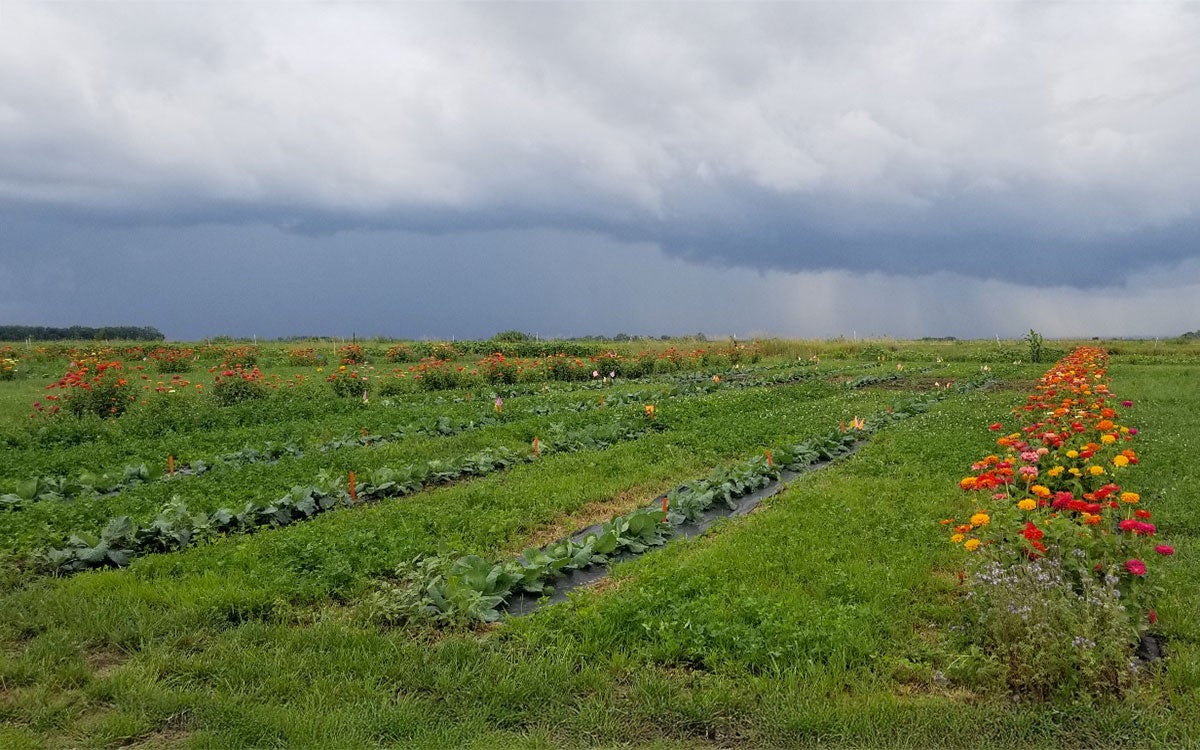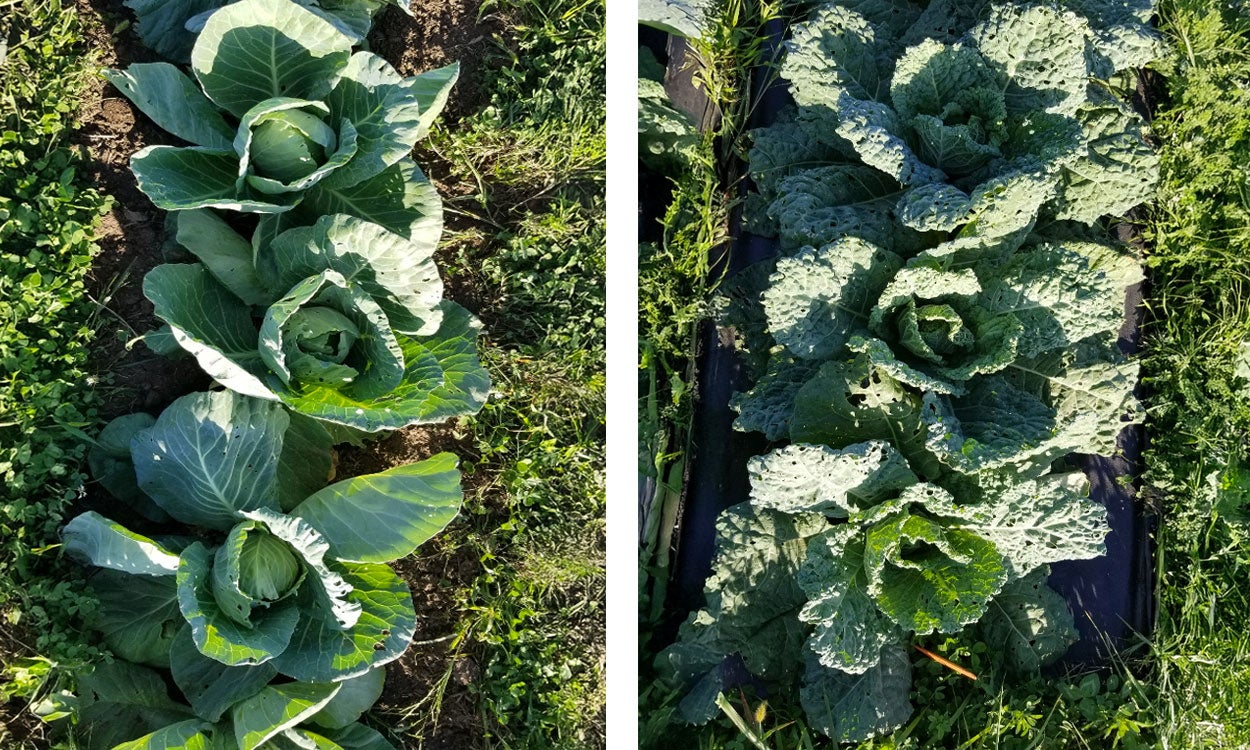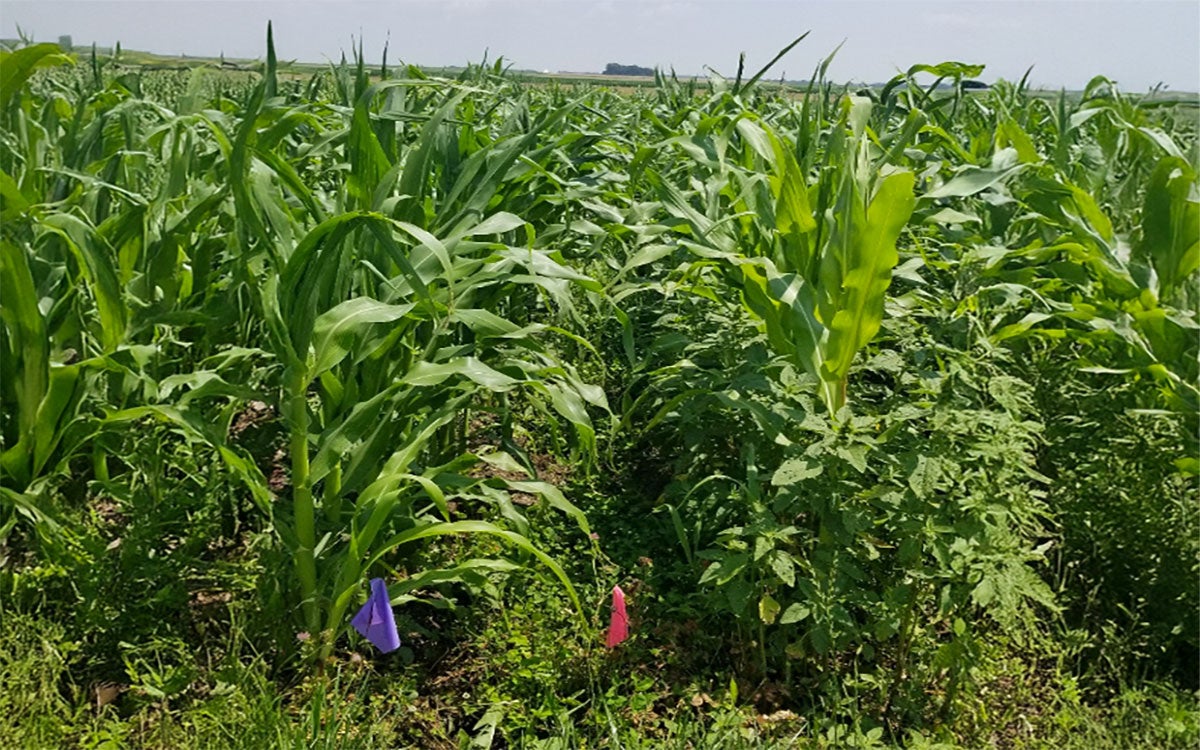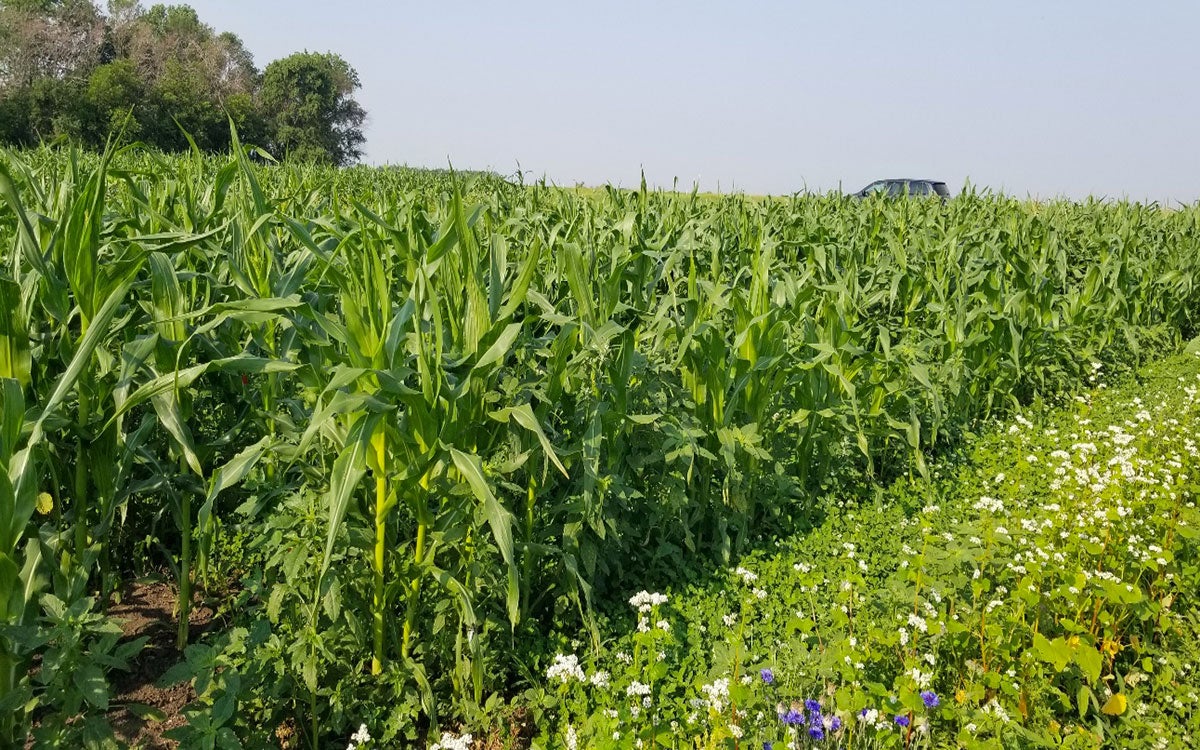Written by Kristine Harms and Nitish Joshi, SDSU Agronomy, Horticulture, and Plant Science M.S. Graduate Research Assistants, under the direction and review of Kristine Lang.
Background
Research on clover cover crops grown in combination with four tillage and weed suppression methods was conducted on USDA Certified Organic land at the SDSU Southeast Farm near Beresford, South Dakota in 2024. This is ongoing research using plots that were established in May 2022 and 2023. Vegetable crops trialed in these systems included sweet corn and three varieties of cabbage grown for a late-fall harvest. Project findings highlight the improved weed suppression in the second and third year of using perennial clover living pathways but also demonstrate yield tradeoffs for both corn and cabbage production. However, differences in soil chemistry and biology are starting to be realized in plots where cover cropping and tillage reduction are used. Current research will continue through spring 2026 with the second year of organic sweet corn production occurring in 2025.
The full report of 2024 research findings can be accessed on the SDSU Open Prairie website, and project results are featured on pages 52, 62, and 73 of the report. This work is funded by the USDA NIFA Organic Transitions Program project 2022-51106-37925, which supports a collaborative research team of soil scientists, agronomists, horticulturalists, economists, and farmer collaborators. Key highlights of the research findings from the 2024 season are included below.
Response of Soil Health to Living Mulch Integration in Organic Vegetable Systems in South Dakota
Summary of Findings: May 2022 Trial Plots

- Nitrate Levels: Nitrate levels in 2023 and 2024 soil samples were lower compared to the baseline samples collected in 2022 from the trail T-22. This reduction is likely due to competition between living clovers and vegetable crops for nitrate uptake. Both systems efficiently utilized available nitrate, reducing its residual levels in the soil over time.
- Phosphorus Levels: Phosphorus levels in soil samples collected in 2023 and 2024 decreased compared to baseline samples collected in 2022. This indicates that living mulch systems may lead to increased phosphorus uptake by crops, reducing the available phosphorus in the soil.
- Potassium Levels: Similarly, potassium levels in 2023 and 2024 decreased compared to baseline samples. This suggests that living mulch systems promote higher potassium utilization by crops, potentially driven by enhanced nutrient competition and uptake.
- Cold Water Extractable Carbon: The labile carbon fraction, measured as cold-water extractable carbon, showed a potential to increase over time, with levels rising in 2023 and 2024 soil samples. This indicates the role of living mulch in contributing organic matter and has potential to enhancing carbon availability in the soil.
- Cold-Water Extractable Nitrogen: Cold water extractable nitrogen levels followed a similar trend to carbon, showing incremental increases from baseline samples to 2023 and further in 2024. This indicates improved nitrogen cycling and availability under the living mulch system.
Summary of Findings: May 2023 Trial Plots

- Beta-Glucosidase Activity: Beta-glucosidase activity in 2024 began showing positive effects in living mulch plots compared to the baseline samples collected in 2023 from trail T-23. The response was stronger in no-till treatments combined with living mulch, highlighting enhanced enzymatic activity linked to organic matter breakdown and soil carbon cycling.
- Microbial Biomass Carbon and Nutrient Enhancement: Microbial biomass carbon, along with some micronutrient levels, showed slight enhancements in 2024 compared the baseline samples collected in 2023 from trail T-23. These improvements suggest that living mulch systems, particularly under no-till management, support microbial activity and nutrient availability, contributing to improved soil health.
Conclusion
Living mulch systems, when integrated with vegetable crops, have potential to enhance nutrient cycling, carbon pools, and enzymatic activities over time in the soil, supporting long-term soil health and productivity.
Exploring the Impact of Clover Living Mulch Systems on Second Year Cabbage Production
Cabbage is a cool season crop that can have many health benefits and is enjoyed in communities around the world. When integrating cabbage into a living mulch system, the in-row management is imperative for yield. Utilizing either a till treatment or ensuring competition suppression through the usage of landscape fabric will protect against yield loses, but it may still result in less yield than fully bare ground conditions.
Competition was beneficial in the pathways between cabbage rows, where white and white x kura clover species out-competed weeds; this was especially aided by heavy spring rains. Rhizomatous and stoloniferous growth patterns of white and white x kura clover enhanced the weed suppression over the tap root growth of the red clover. The pathways in the clover treatments enhanced the landscape, habitat quality, pollinator well-being, and prevented overly saturated ground, improving field access.


Clover Living Mulch Impacts on Sweet Corn Production: Year One
“Knee-high by the Fourth-of-July” is a common saying throughout the Corn Belt and farmland across the United States. Organic sweet corn produced in bare-ground conditions follows this trend known through generations; yet, when integrated with a living mulch system, sweet corn production was delayed, and quality was reduced.
The living mulch systems produced similar complete yield for sweet corn production, but the variation was reflected in the quality of the ears. Strip-tillage within clover plots for the sweet corn production was beneficial and assisted with the quality of ears produced. Strip-tillage assisted with suppressing clover competition. The clover competed with the sweet corn until early July when the canopies closed, and the sweet corn reached knee-high. After that time, sweet corn was more competitive against clovers. A second year of this study will continue to examine timing, yield, and quality of the crop.



